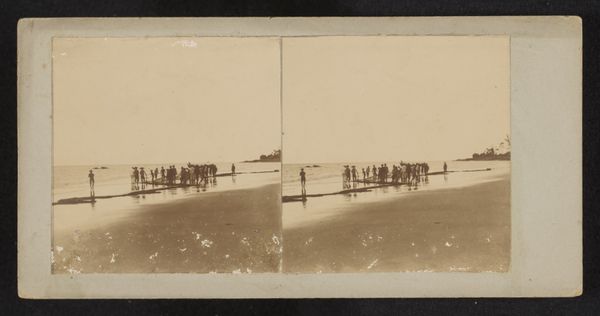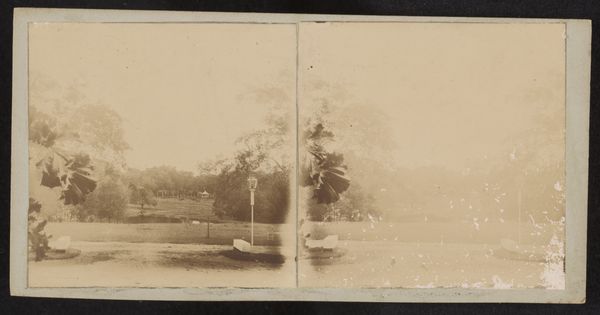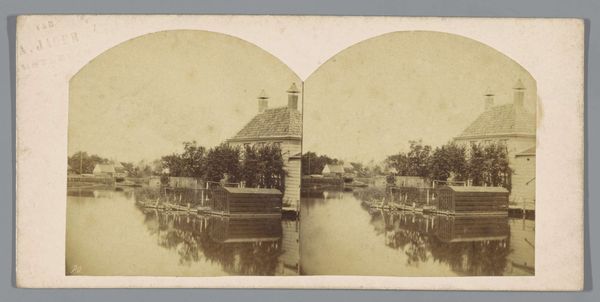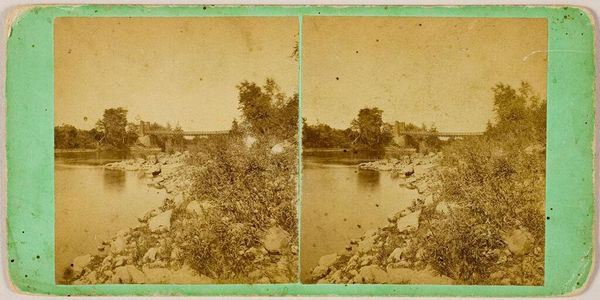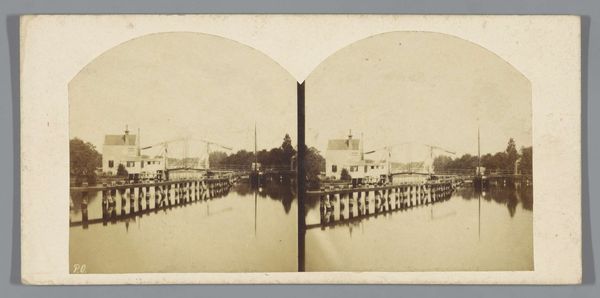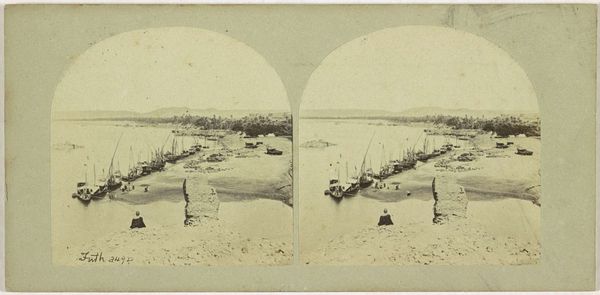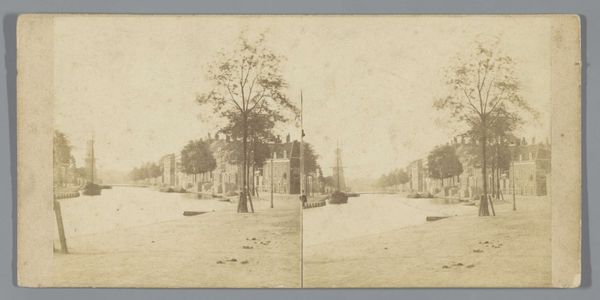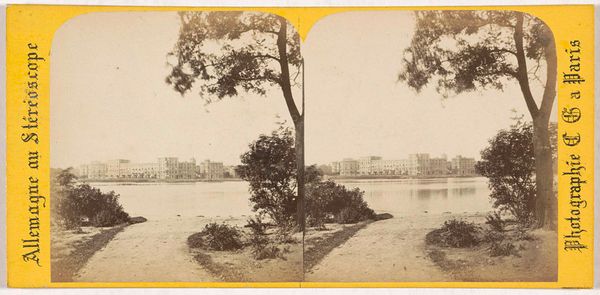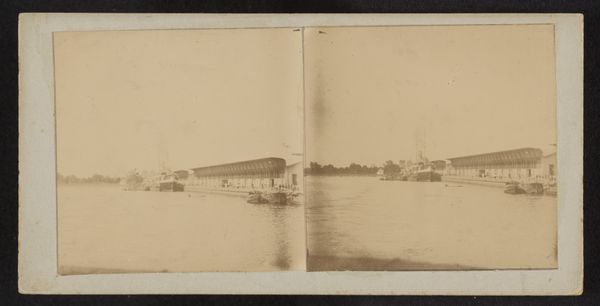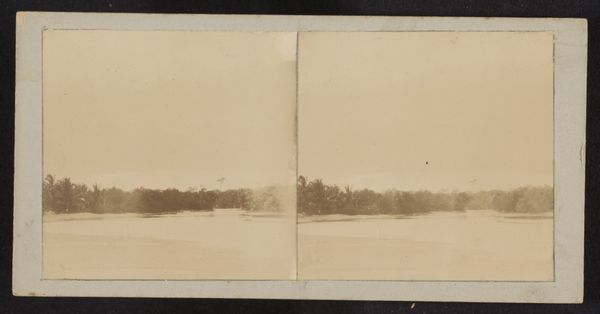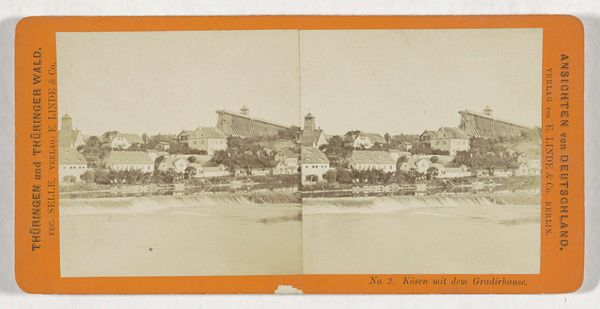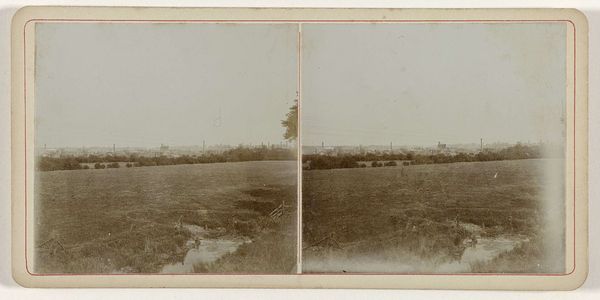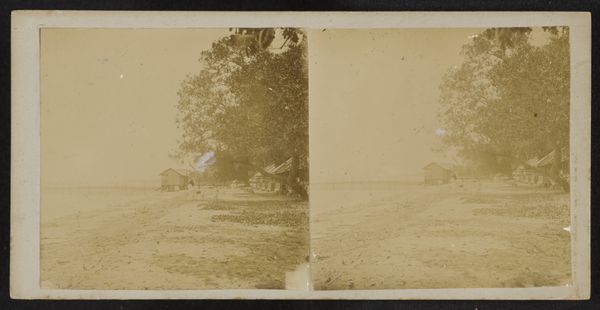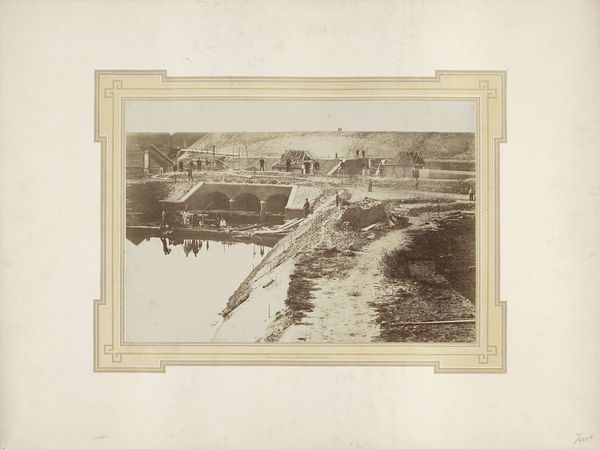
contact-print, photography, albumen-print
#
landscape
#
contact-print
#
photography
#
coloured pencil
#
orientalism
#
albumen-print
Dimensions: height 81 mm, width 165 mm
Copyright: Rijks Museum: Open Domain
Curator: What a serene scene. We’re looking at “Canton, The Landing Place,” a stereoscopic albumen print crafted by Pierre Joseph Rossier in 1859. Editor: Yes, my immediate impression is of the photograph's delicate tonal range and subtle layering— the pale sky, soft water, the intricate latticework of the docks. It is almost monochromatic in its gentle palette. Curator: Precisely! The seemingly placid image is more than a mere recording; it's an artifact of a period of intense socio-political turbulence. Rossier was among the first commercial photographers in China, arriving in the wake of the Second Opium War. His work served to feed the Western appetite for exotic, often romanticized views of the East, obscuring the complex realities of colonial presence. Editor: I understand your point entirely; however, the strength of the composition shouldn't be overlooked. Note the horizontal emphasis achieved by the river and the subtle use of atmospheric perspective. The eye is drawn across the river towards the background and back to the dock in the foreground. Curator: Indeed. It also invites reflection upon how those in Canton might have viewed the encroachment upon their shores. Photographs like this reinforced prevailing views about progress and civility. They masked unequal power dynamics that shaped cultural exchange. Editor: Though undeniably it bears the marks of its time, its aesthetic quality endures: The tactile details of the boats along the shore contrast effectively against the soft background; these formal relationships work even if we divorce the photograph from its original historical and political setting. Curator: True, such elements add a timeless allure that obscures an inherent partiality. By viewing the photograph within the context of unequal encounters, we might challenge a tendency for idealizing moments of cross-cultural interaction. Editor: I appreciate how thinking about the power dynamics at play makes me question my purely aesthetic reading of the image. Curator: And I think that observing formal details reminds us not to discard such artistic achievements entirely but rather reflect on ways our perspectives might evolve through the act of historical observation.
Comments
No comments
Be the first to comment and join the conversation on the ultimate creative platform.
